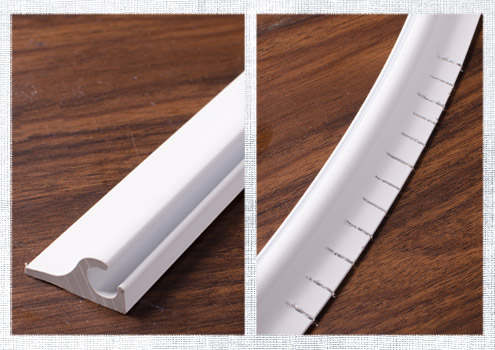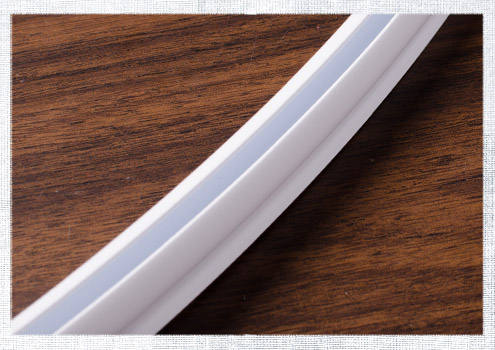How to Bend Awning Track
Have you ever thought of using awning track on your boat? This tough track is used to attach fabric to a hard surface and can be used to secure covers, awnings, enclosure panels and even the front of dodgers. Awning track creates a snug and secure attachment, with a sleeker look than snaps. Several of these common uses require the awning track to have a bit of a bend, and some awning tracks will accommodate that better than others. Let’s take a look at the most bendable awning track, some tricks of the trade and how to make awning track work for your boat.
The traditional and most common type of awning track features a groove for the awning rope to feed into with a flange for securing to the hard surface. This type of track is available in aluminum or PVC. The traditional style of awning track has very little give, since it was not designed to bend. You can secure it around a gradual curve by cutting slits in the flange. Using a hacksaw carefully saw slits in the flange of the awning track. If you want to bend the track away from the flange, slits are fine. To bend the track towards the flange, cut in a V-shape.
For a more versatile curving awning track, try Flex-a-Rail. This track was made specifically to bend and can curve in any direction. It will even turn a corner with a radius as small as 10 inches. If the Flex-a-Rail seems stiff at first and you need it to curve more, boil a pot of water and hold the track in the steam coming off the water. You can also use a hairdryer or other hot air blower to heat Flex-a-Rail and traditional PVC track to increase the curve. The heat will loosen up the plastic and give you more flexibility. However, once the track cools, it will harden in the shape you’ve bent it in. So be sure you have it shaped just right!
Since the Flex-a-Rail doesn’t have a flange, it is secured to hard surfaces with special screws that install in the groove of the track but sit under the rope. To install, bend the track in place where you want it, and drill a pilot hole through the track and into the installation surface. Then use a square-headed screwdriver to drive the screws into the surface.
You can find both of these types of awning track, awning rope, and great marine fabrics at www.sailrite.com.
Do you use awning track on your boat? Are you thinking of using it? Share your experiences and opinions with us in the comments!


I believe you meant “… turn a corner with a radius AS SMALL AS 10 inches”…!
You’re right, Sue!
Reblogged this on Dragon Wing's Adventures and commented:
We have awning track on our dodger. It gives a much more uniform “pull” to the vinyl, which is nice.
hi. I’m Peter hard and I’ve had one of the sale rights same machines quite sometime. sale right periodically send useful bits of information which I should have stored. there was one showing the different ways to sow up a tarpaulin so that it could be waterproof. I would appreciate it if you could let me know how I could find that issue so that I could make use of there advice.
All help appreciated. Best regards Peter
Hi Peter,
I’m not sure exactly which piece of information you received, but I think this video about sealing vinyl seams might help you. This method would make a vinyl tarp waterproof: http://youtu.be/4hdQ-_fvyEY
I hope that helps! Please let us know if you need further assistance.
Pingback: How to Bend & Install Flex-a-Rail Awning Track | Do-It-Yourself Advice Blog.
I’m thinking of using a track system as I replace my dodger. We want a hard top, but canvas window and side curtains. Should these tracks be used under the hard top (completely protected from sun exposure) or can they be mounted on top, where the fabric can flip over the tracks?
Thanks!
Hi Kelley,
The awning track & awning rope are meant to hang down or be at a slight angle when installed. While we’ve never tested it, our best guess is that positioning it so the fabric flips over the track and then hangs down might not work well. Our best recommendation would be mounting the awning track on the underside of the hard top. Hope that helps you!
That’s what I suspected, Thank you for the quick reply!
It is crazy that you need to cut little notches into the PVC track to be able to bend this awning track. It seems like ti would be so much easier to do that if the track was made out of metal. Personally, I would rather have it be made out of a metal like aluminum. That way, a professional could easily get it into the right shape without weakening the metal.